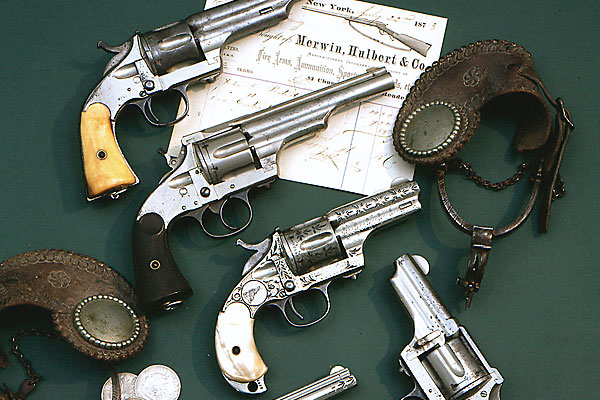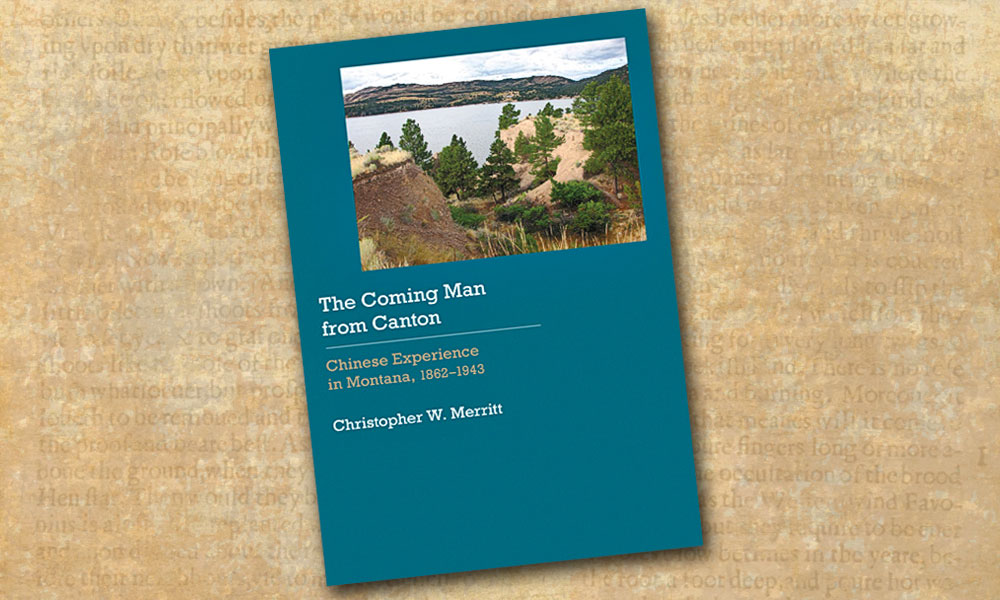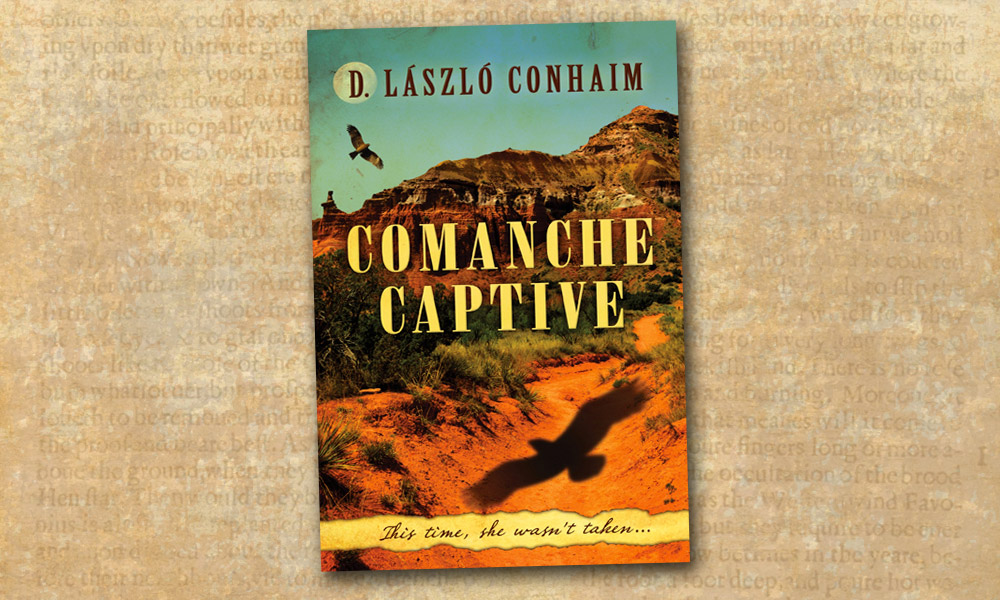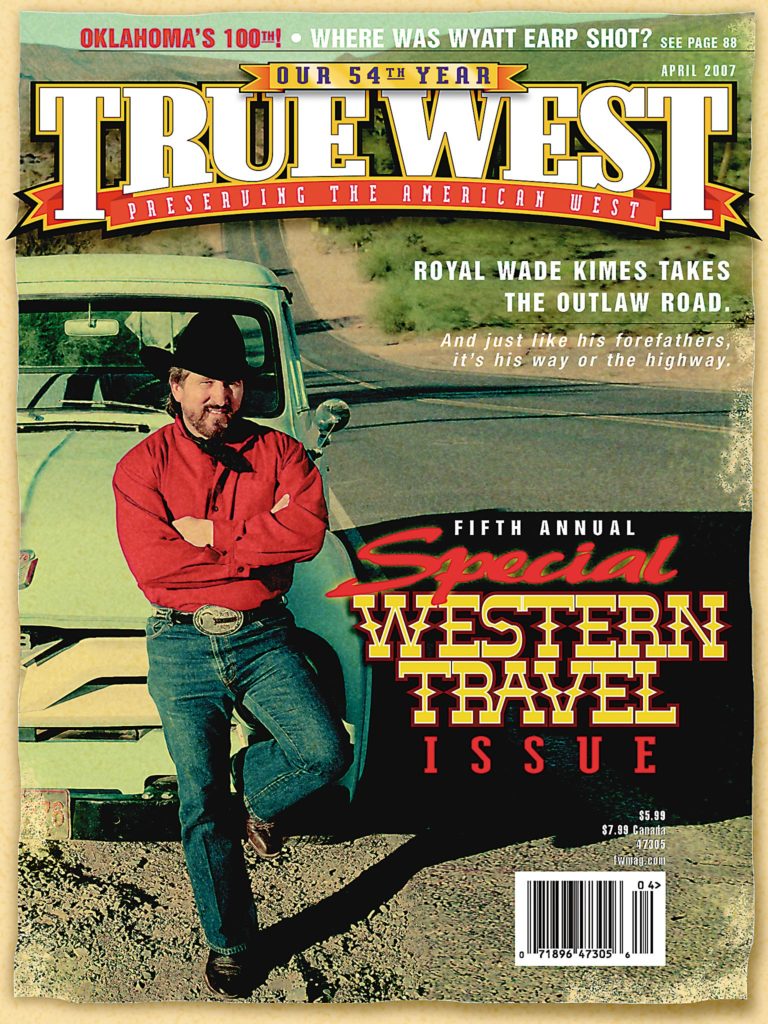 The few surviving factory records reveal that Merwin, Hulbert & Co. was organized in 1874, when New England inventive genius and savvy businessman Joseph Merwin joined forces with William A. and M.H. Hulbert—two brothers who had enjoyed a fair degree of success as businessmen and financiers.
The few surviving factory records reveal that Merwin, Hulbert & Co. was organized in 1874, when New England inventive genius and savvy businessman Joseph Merwin joined forces with William A. and M.H. Hulbert—two brothers who had enjoyed a fair degree of success as businessmen and financiers.
Through this new partnership—gaining half interests in several arms companies, representing several top gun makers of the era (Colt, Winchester, Marlin and others) and offering a full line of sporting goods—the firm became the world’s largest dealer in firearms and related accessories.
By around 1876, MH&Co. was producing its own distinctive revolvers at the Norwich, Connecticut, Hopkins & Allen plant. These Merwin, Hulbert & Co. guns carried some of the most advanced features of the period such as an “automatic shell ejector,” which ejected only the empty cartridge shell casings when the revolver was broken open.
Using state-of-the-art machinery, MH&Co. manufactured single-action and double-action revolvers under the strictest quality control methods. For example, the precision fitting of the gun creates a vacuum when the barrel is pulled forward for cartridge extraction—a phenomenon not found in any other arm! The company also covered the rear of the cylinder to keep the cartridges free of debris and the gun’s small parts from exposure to rust or other obstructions. And while other arms companies charged extra for the corrosion-resistant nickel plating, MH&Co. wisely offered nickeled guns for the same price as arms with a blue steel finish (only about one gun in 20 were blued).
Merwin, Hulbert & Co. produced a variety of revolvers from small spur trigger .22 and .32 caliber rimfire and centerfire pocket pistols and mid-sized .38-bore wheelguns, to large-framed belt and holster six-shooters (with trigger guards) in .38 and .44 caliber centerfire. MH&Co.’s revolvers enjoyed a fair degree of acceptance on the frontier. The state of Kansas purchased some; MH&Co. revolvers were used by several military officers and the Union Pacific Railroad crew as well as outlaw Jesse James and lady bandit Pearl Hart. Foreign imitations of the guns proved the popularity of the Merwin revolvers.
Despite the company’s numerous assets, it suffered several major financial setbacks brought about by MH&Co.’s inability to collect payment for three shiploads of revolvers sold to the Russian government, the failure of its Evans Rifle Co. and a trusted associate’s embezzlement of company funds. By 1881, MH&Co, forced into receivership, quickly reorganized and continued producing revolvers until a disastrous fire burned the factory to the ground 10 years later—destroying virtually all of the sales and manufacturing records, as well.
The company was succeeded by Hulbert Bros. & Co. in partnership with Hopkins & Allen. Unfortunately, by 1896, this firm, too, had gone under, finally signaling the end of Merwin, Hulbert & Co.— a sad end to a fine line of firearms.





